Art World
An Artist Recreates a Lost Velázquez Painting With A.I.
Fernando Sánchez Castillo has digitally re-imagined a work destroyed in a 1734 fire.
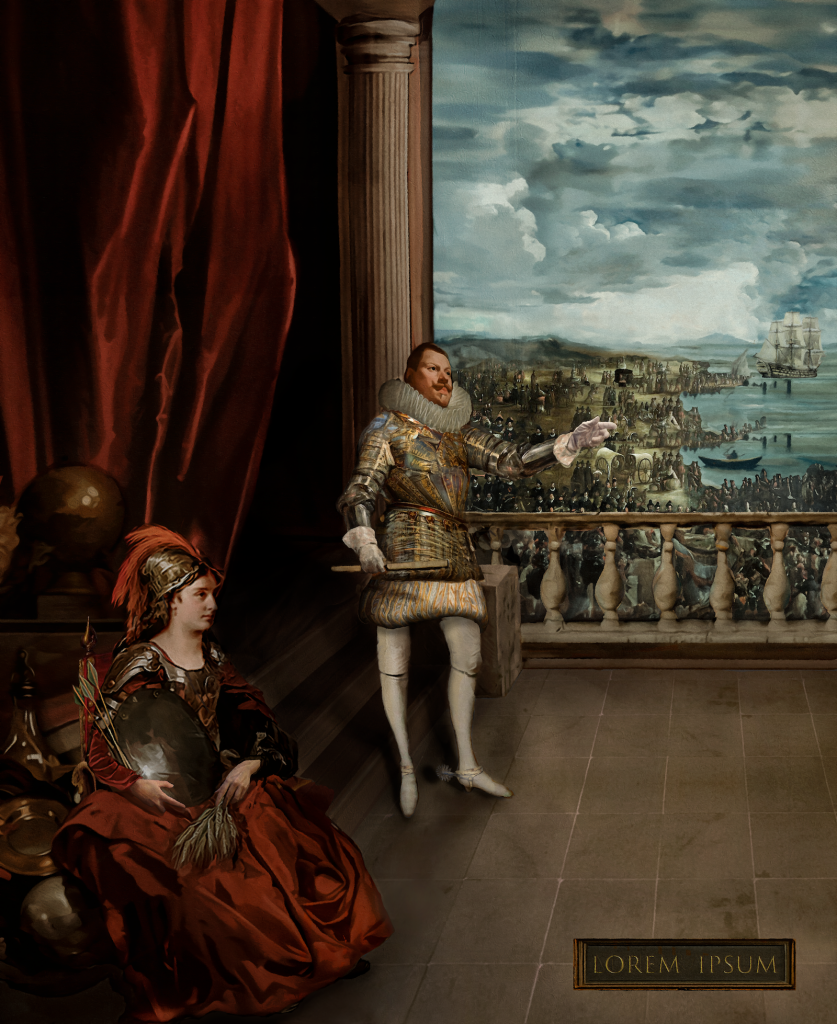
Diego Velázquez’s Expulsion of the Moriscos (1627) did not have the same lucky escape as Las Meninas (1656) when a catastrophic four-day fire broke out in Madrid’s royal palace in 1734. Las Meninas was snatched from the flames, taken from its frame, and thrown out of a nearby window to save it. But sadly Expulsion of the Moriscos was destroyed (along with 500 other artworks including those by Leonardo da Vinci, Raphael, Titian, and Hieronymus Bosch).
But now, after almost 300 years, the work has been recreated using A.I. technology. Fernando Sánchez Castillo, a Madrid-based artist whose practice focuses on reconsidering historical events and figures, has used Photoshop to reimagine what Expulsion of the Moriscos would have looked like before it was destroyed.
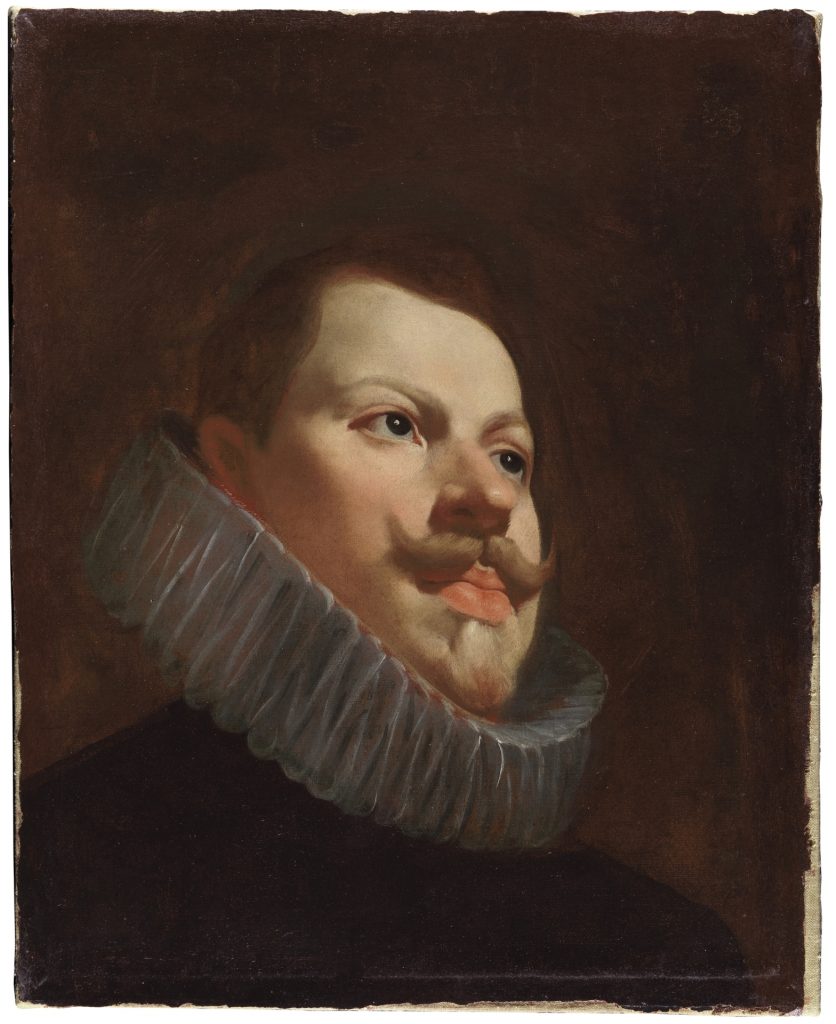
Diego Velázquez, Philip III (1627). Courtesy Museo Nacional del Prado.
The painting showed the moment in the 1609 when King Philip III decreed that the Moriscos—Muslims, numbering around 300,000, who had been forced to convert to Christianity in the early 16th century—were to be expelled from Spain. In the painting, the Spanish king Philip III issues his order to expel the Moriscos.
Eighteen years later, in 1627, the king’s son, King Philip IV, challenged his court’s artists (Vincente Carducho, Eugenio Caxesi, Angelo Nardi, and Velázquez) to a competition to earn the title of chamber painter, and dictated the expulsion as the subject for their paintings. Velázquez won, dispelling the myth that he was an artist only able to paint heads.
In addition to Photoshop, Sánchez Castillo was also armed with written descriptions of the painting, made by painter and writer Antonio Palomino a few years before the fire, and a preliminary study portrait of Philip III made by the artist in 1627 (six years after the monarch’s death), which was discovered in the 1980s. (The portrait was donated to the American Friends of the Prado Museum by the art historian William B. Jordan, who purchased the work in 1988 at Phillips, where it had been incorrectly identified as a work by the circle of Flemish painter Justus Sustermans.) The artist was also assisted by PhD candidate Paula García, whose doctoral thesis explores A.I.’s applications in contemporary art practices.
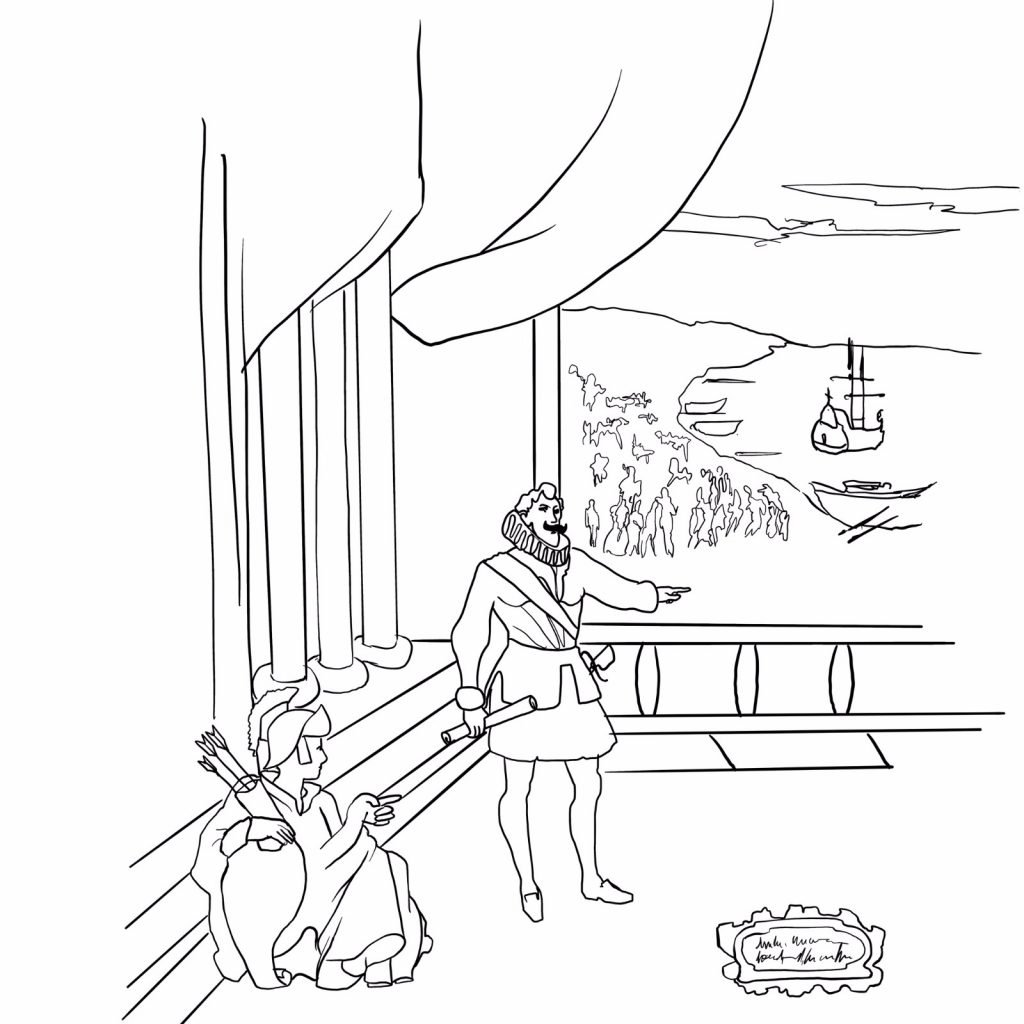
Fernando Sánchez Castillo, preparatory sketch (2024). Image courtesy of the artist.
In Sánchez Castillo’s preparatory sketch of the painting, guided by the description of Velázquez’s painting written by Palomino, he lays out the main elements of the composition: the two figures, the architecture, the background, and a cartouche in the lower right corner.
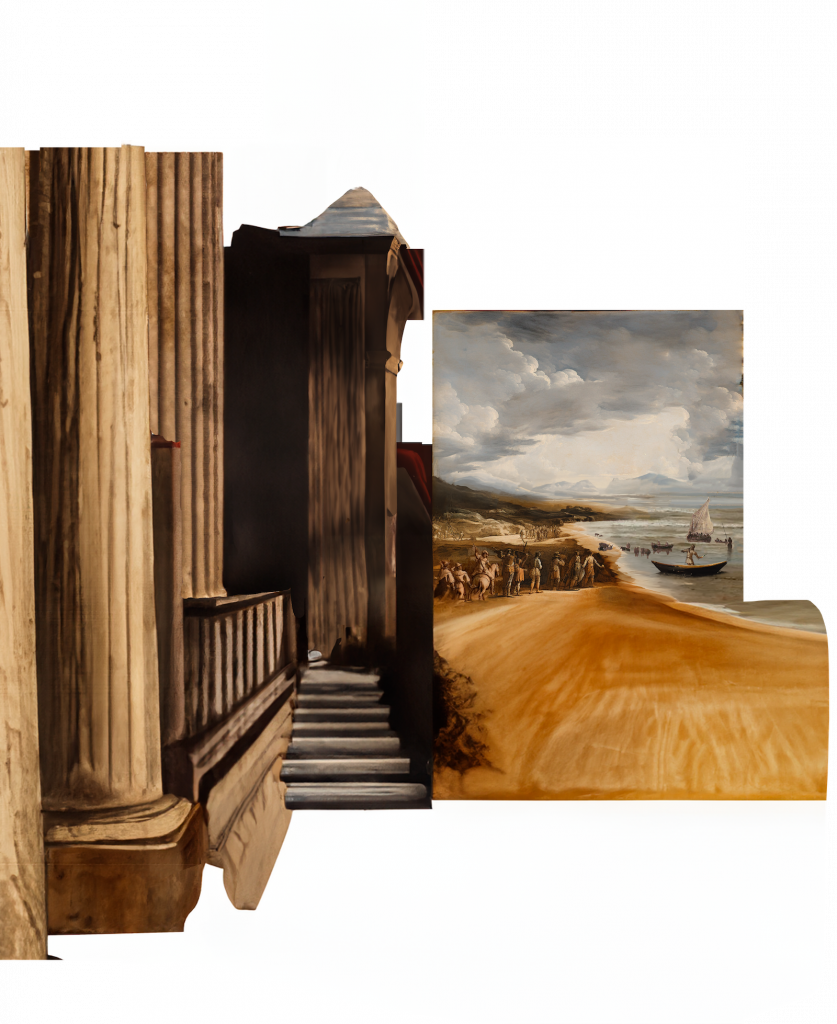
Fernando Sánchez Castillo, AI Progress Stage (2024). Image courtesy of the artist.
Next, Sánchez Castillo begins to use generative A.I. generative to fill in the detail of the background and the base architecture. The areas of A.I.-generated imagery do not necessarily join up cohesively to one another. Blank space is left for the swooping curtain, figures, and expansive sky.
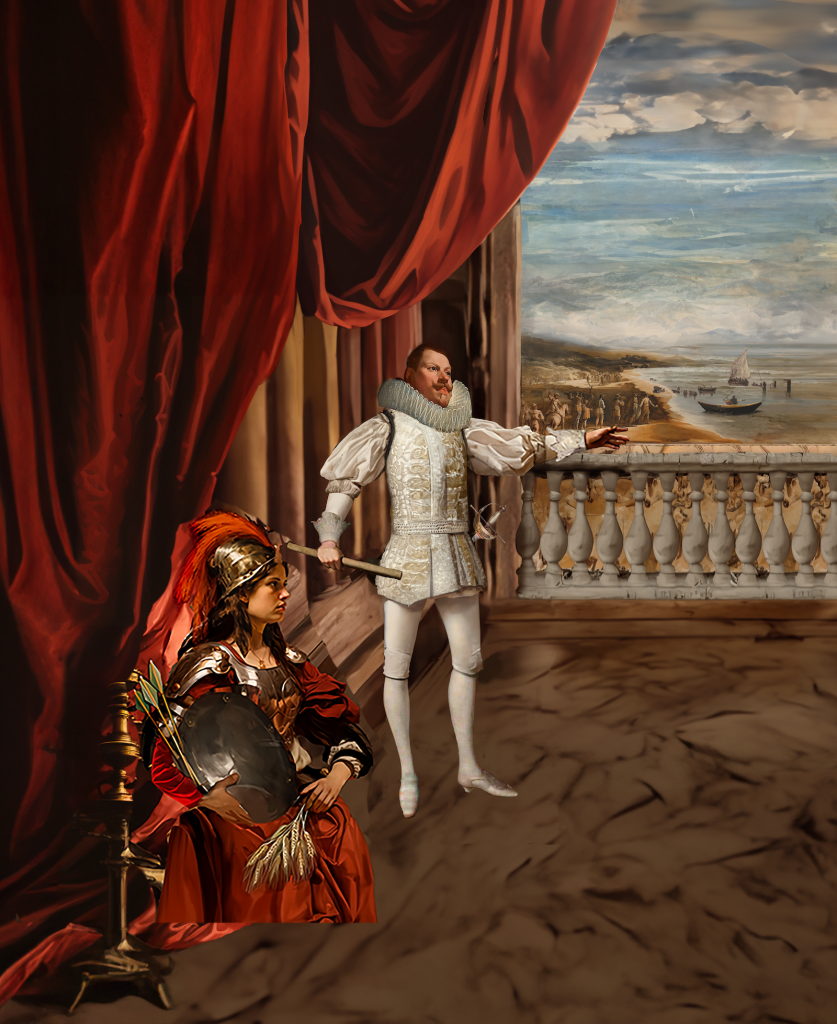
Fernando Sánchez Castillo, AI Progress Stage (2024). Image courtesy of the artist.
In this next phase, the artist has expanded the A.I.-generated background to fill the digital canvas. He has also added his figure of Philip III and the seated female figure (who is currently not in her final position) as well as the large red curtain. The different visual elements in this stage still do not necessarily fit together.
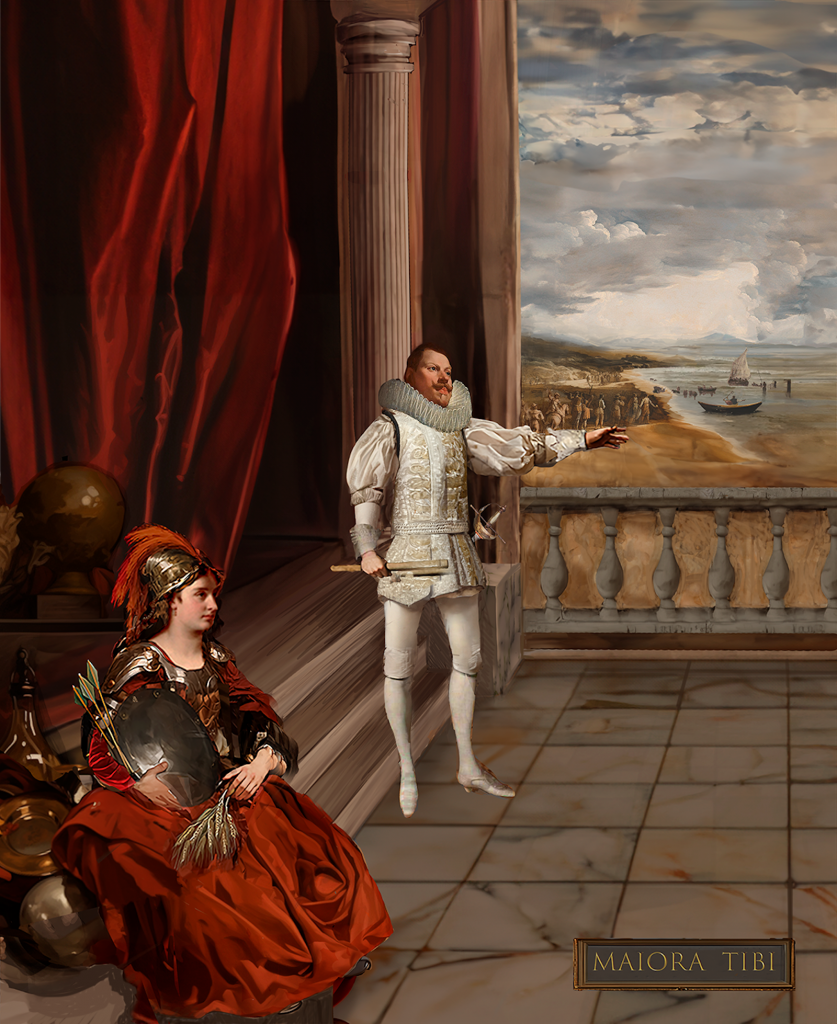
Fernando Sánchez Castillo, AI Progress Stage (2024). Image courtesy of the artist.
Here the woman’s face has been made more painterly, better fitting with the style of the portrait of Philip III. The foreground plaque is added and the area behind the curtain is cleared out into darkness.

Fernando Sánchez Castillo, Expulsion of the Moriscos (2024). Image courtesy of the artist.
In the final phase, Sánchez Castillo ensures that all elements sit cohesively with one another, and adds a filter effect that unifies the color palette.
The usage of A.I. by artists is controversial: some of these models have been slammed for scrapping the work of creatives without their consent, though the technology has also proved handy in fields such as art authentication. Sánchez Castillo, however, sees A.I. as an addition to the artist’s toolkit. “I consider [artificial intelligence] a powerful tool to create a community brain able to empower aesthetic united to ethics,” he said.





